Roland Barthes, on traditional Japanese houses: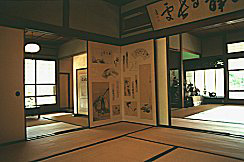
"And so that we may see how it is put together, let
it be illustrated by the Shikidai corridor: papered with opening, framed
by empty space and framing nothing, decorated, it is true, but in such
a way that the figuration (flowers, trees, birds, animals) is swept away,
sublimated, shifted far from the forefront of vision. 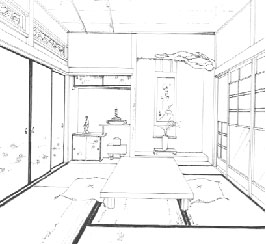 .
. in this corridor, as in the ideal Japanese house, devoid or nearly so,
of furniture, there is no place which in any way designates property;
no seat, no bed, no table provides a point from which the body may constitute
itself as subject (or master) of space. The very concept of centre isrejected
(a burning frustration for Western Man, everywhere provided with his arm-chair
and his bed, the owner of a domestic position). Non-centered, this space
is also reversible: you can turn the Shikidai corridor upside down and
nothing will happen other than an inconsequential inversion of high and
low, right and left. Content has been irrevocably dismissed: whether we
pass through, or sit on the floor (or ceiling, if you turn the picture
around) there is nothing to grasp." .
. in this corridor, as in the ideal Japanese house, devoid or nearly so,
of furniture, there is no place which in any way designates property;
no seat, no bed, no table provides a point from which the body may constitute
itself as subject (or master) of space. The very concept of centre isrejected
(a burning frustration for Western Man, everywhere provided with his arm-chair
and his bed, the owner of a domestic position). Non-centered, this space
is also reversible: you can turn the Shikidai corridor upside down and
nothing will happen other than an inconsequential inversion of high and
low, right and left. Content has been irrevocably dismissed: whether we
pass through, or sit on the floor (or ceiling, if you turn the picture
around) there is nothing to grasp."
Ernst Earle, on social coherence and traditional Japanese culture:
"Wealth could provide greater abundance of food and
better quality materials; it could purchase nothing essentially different
in from or function. The code of morality and social behavior . . . at
last permeated into all social groups, so that finally the Edo fireman
shared an ethical climate not immediately distinguishable from that of
the samurai.
Similarly, tastes in art were built up out of commonly
shared artistic experiences . . . Identical tastes in music and in the
graphic arts were so widespread that, until modern times, the body of
artistic canon did not differ significantly according to social stratification.
A maid serving tea moved in a style similar to that used at court ceremonies;
shop clerks were taught to sit, move, and stand in patterns used in the
No and were intensively drilled to speak in a manner closely resembling
that of the Kabuki actor."
Kato Shuichi, on form, style and tradition in Japanese art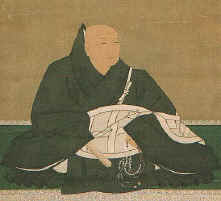
"Different types of art, generated in different periods,
did not supplant each other, but coexisted and remained more or less creative
from the time of their first appearance up to our time. Buddhist statues,
a major genre of artistic  expression
in the period from the sixth to the ninth century, continued to evolve
in style during the following eras, even when the picture scroll opened
newpossibilities for the visual representation of the world in the Heian
period. Brush works with india ink flourished during the Muromachi period
[1336-1573], but one school of artists remained faithful to the techniques
and style of the picture scroll . . . Artists never ceased to carve Buddhist
statues or engage with great passion in brush-work painting. Practically
no style ever died. In other words, the history of Japanese art is not
one of succession but one of superimposition." expression
in the period from the sixth to the ninth century, continued to evolve
in style during the following eras, even when the picture scroll opened
newpossibilities for the visual representation of the world in the Heian
period. Brush works with india ink flourished during the Muromachi period
[1336-1573], but one school of artists remained faithful to the techniques
and style of the picture scroll . . . Artists never ceased to carve Buddhist
statues or engage with great passion in brush-work painting. Practically
no style ever died. In other words, the history of Japanese art is not
one of succession but one of superimposition."
Text, Image, and Pictorial Surface
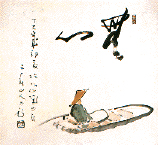 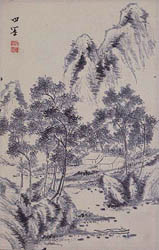
|
